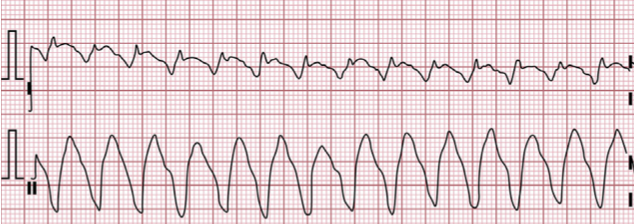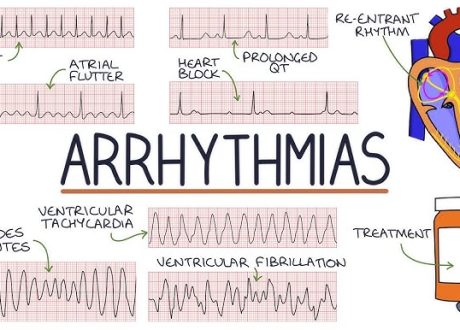Written by Clay Smith
Spoon Feed
When treating this wide complex tachycardia (WCT) with synchronized cardioversion, the machine interpreted the T wave as the R wave. Nothing good comes of that!
Why does this matter?
We often need to cardiovert patients with cardiac dysrhythmias. Usually, the machine does just fine finding the R wave, since it’s often the biggest one, but what if the machine gets it wrong?
What the WCT?
This was a case report of a patient with a WCT who was unstable. They performed synchronized cardioversion, and the rhythm degenerated to pulseless polymorphic VT. Ruh-roh! Not to worry, they did an unsynchronized shock and got him back. But why did this happen? I am just going to show portions of the tracings from this article. Suffice it to say, this was a nasty looking WCT, and it wasn’t clear whether VT or SVT with aberrancy. Either way, he was unstable – so…shock.
Here is part of the 12-lead. Note lead I has an initial Q wave, R wave, and downsloping T wave. Look down one lead, to lead II, and note that massive T wave.

Unfortunately, the machine synched on lead II and interpreted the T wave as the R wave and delivered the shock right on it. That produced an R-on-T phenomenon, which precipitated polymorphic VT.

The moral of this story is to make sure the monitor is synching with the R wave and not the T wave, especially in patients with monster T waves from hyperkalemia. You may have to change the monitor’s sensing lead.
Source
An Adverse Outcome With Cardioversion of a Wide-Complex Tachycardia. Ann Emerg Med. 2022 Feb;79(2):113-115. doi: 10.1016/j.annemergmed.2021.06.011










